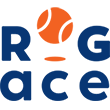If you’re reading this, congratulations! You’ve almost made it through the first month of the New Year. Chances are, you used this month to focus on personal goals and, if you’re diligent, have made a plan of attack for achieving them. This is also a great time of year for your young athlete to dial in on the skills on which they’d like to improve. Not only can you help them make measurable, realistic goals, you can also play a big role in helping them reach them by the end of the year.
Broad vs. Specific Goals
When we think about self-improvement in any area of life, but specifically athletics, it’s not enough to say that we simply “want to get better at X.” Everyone’s “better” is slightly different—it’s all relative. This type of goal setting is too broad, and it doesn’t hold us accountable to measurable improvement.
Chances are, you’ve probably heard your young athlete say something along the lines of “I wish I was better at serving” or “I wish my backhand was stronger.” It’s easy to reply to this with a favorite adage of coaches and trainers everywhere—“practice makes perfect”—but the better response encourages your child to focus their practice, be more specific and come up with goals they can actually work toward.
A specific goal has a timeline with an end date that tells us when we plan to check in and evaluate our progress. It also has a clearly stated desired outcome, so we know what our idea of success looks like. Lastly, it has clearly outlined, actionable steps we can take at every practice to ensure we meet our desired outcome according to our timeline.
For example, let’s say your young athlete wants to get better at serving. First, ask them what exactly it is about their current serve that they’d like to improve. For the purposes of this exercise, let’s say it’s accuracy. Ask them to describe what a more accurate serve might look like in terms of grip, body positioning and footwork. Help them find a way to measure their accuracy. For example, they could aim to serve to a specific target in each half of the box a certain number of times in a row. Next, encourage them to establish a timeline and ask them how they’ll know when they’ve achieved their goal.
According to this guide, a measurable goal for this objective might be “with an overhead serve from the service line, I’d like to be able to serve the ball into each half of the service box, six out of seven times before my next tournament.”
The ROGace Method: Mastery at Every Level
When it comes to high-performance youth tennis training, there is an impulse to measure all improvement with court sizes, ball colors and racket sizes. We’ve spoken at length on the shortcomings of this method, but for the sake of brevity here, let’s just say that these types of measurements are at best insufficient for observing improvement and determining actual skill level. They encourage young athletes to strive for a color or a size, not specific, skills-based goals. That’s why ROGace uses a system of badges to help our athlete develop their skills and achieve mastery at every level. Our method is particularly conducive to smart goal setting.
Each badge focuses on a specific training objective—backhand, forehand, offense, defense, serve and sportsmanship—and is broken down into actionable, measurable steps. Athletes can use these steps and badges as goal-setting guides. Earning a badge requires time, patience and sustained effort, and players shouldn’t expect to accomplish them in one to two weeks. If you or your young athlete are ever stumped about what they can be working on to improve in a certain skill area, our badge guidelines are the perfect place to start framing your plan of attack.
If you’re curious about our training methodology or want more tips on how you can help your young athlete achieve their goals, never hesitate to reach out. Our staff of friendly, knowledgeable coaches are here to help and are happy to answer any questions about our innovative approach to training.







